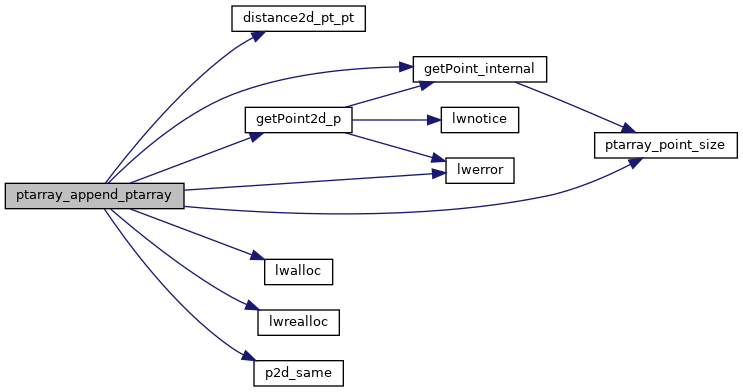◆ ptarray_append_ptarray()
| int ptarray_append_ptarray | ( | POINTARRAY * | pa1, |
| POINTARRAY * | pa2, | ||
| double | gap_tolerance | ||
| ) |
Append a POINTARRAY, pa2 to the end of an existing POINTARRAY, pa1.
If gap_tolerance is >= 0 then the end point of pa1 will be checked for being within gap_tolerance 2d distance from start point of pa2 or an error will be raised and LW_FAILURE returned. A gap_tolerance < 0 disables the check.
If end point of pa1 and start point of pa2 are 2d-equal, then pa2 first point will not be appended.
Definition at line 177 of file ptarray.c.
References distance2d_pt_pt(), POINTARRAY::flags, FLAGS_GET_READONLY, FLAGS_GET_ZM, getPoint2d_p(), getPoint_internal(), LW_FAILURE, LW_SUCCESS, lwalloc(), lwerror(), lwrealloc(), POINTARRAY::maxpoints, POINTARRAY::npoints, p2d_same(), ptarray_point_size(), and POINTARRAY::serialized_pointlist.
Referenced by _lwt_HealEdges(), _lwt_MakeRingShell(), lwline_from_lwgeom_array(), and test_ptarray_append_ptarray().

